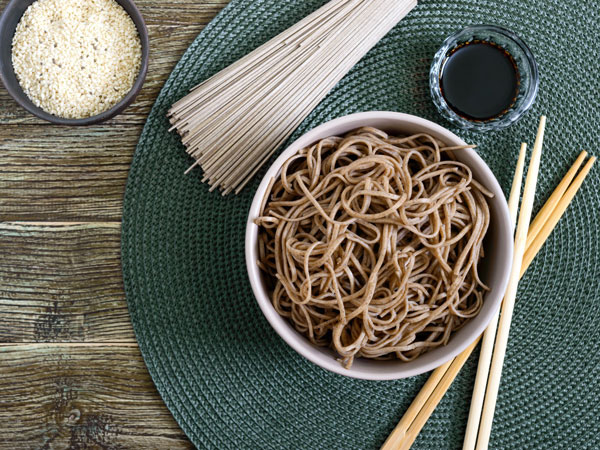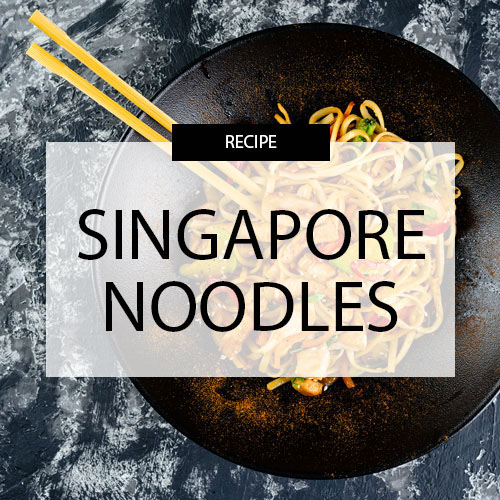They are traditional Japanese noodles made from buckwheat. But are soba noodles gluten free and what are they actually made from?
With their robust flavour, soba noodles are perfect with aromatic Asian sauces but are they good for your health? Let’s find out.
What are soba noodles?
Soba is the Japanese word for buckwheat. Soba noodles have been around in Japan since the 17th century, when the aristocracy discovered they had health benefits over white rice and could cure beriberi. Thiamine was not identified until 1897, but we know now that the thiamine content of buckwheat was likely responsible for this. Soba making was a specialist art, confined to those who could afford it, and served in eating houses.
Nowadays everyone eats soba noodles and they are the traditional noodle of Tokyo. Available throughout the world as dried noodles, in Japan or Japanese restaurants they may be fresh and handmade.
Soba noodles are a long thin spaghetti like noodle with a beige brown colour and a slippery texture when cooked. It is considered correct to slurp your noodles as it enhances the flavour as well as cools them down. The flavour is nutty with a pleasing sourness like sourdough bread.
What are soba noodles made from?

Although soba noodles are made with buckwheat, they often contain wheat flour too. The usual percentage is 80% buckwheat to 20% wheat flour. Buckwheat noodles can be fragile and bitter so wheat flour is added to create a better texture. Some soba noodles may contain very little actual buckwheat so it is always best to read the label. They should contain nothing else other than flour and water.
Are soba noodles gluten free?
Because of the added wheat, not all soba noodles are gluten free. The most traditional variety of soba noodle, called juwari soba, are made from 100% buckwheat and are therefore gluten free. The texture is different to standard soba noodles. They are slightly grainy and very fragile, and are also more expensive.
If you tolerate gluten, go for a variety that contain the 80/20 ratio as the texture really is preferable.
Are soba noodles wholegrain?
Buckwheat is not strictly a wholegrain as it is a pseudo-grain not a cereal grain. Nutritionally speaking though, buckwheat is classed as a wholegrain and has all the benefits that go with it.
Are soba noodles healthier than pasta?
In comparison to wholegrain pasta, soba noodles are pretty similar. But who eats wholegrain pasta, right? Compared to dried pasta, made with refined white flour and no egg, soba noodles are certainly the healthy choice. With a lower GI, buckwheat can help to improve blood sugar control. It is also a good source of manganese and Vitamin B1 (thiamine). Full of fibre and also resistant starch, soba noodles can aid digestive health. Easily digestible, they provide a small amount of high quality protein that is rich in the amino acid lysine.
How to cook soba noodles
Cooking times for soba noodles will vary, as the thickness varies. So always follow the manufacturers instructions. Dropped in lightly salted boiling water they take about 3 to 5 minutes. Give them plenty of space and move them around often. Drain and serve hot, or run under cold water until cooled and serve cold.
Soba noodles are great with many of our Asian sauces, and are also particularly good served in broth.
For a great noodle dish, hot or cold, toss noodles in our Japanese dressing and scatter with finely chopped spring onions.
Choose from our range of organic Asian sauces, or head on over to our online bulk food store.



